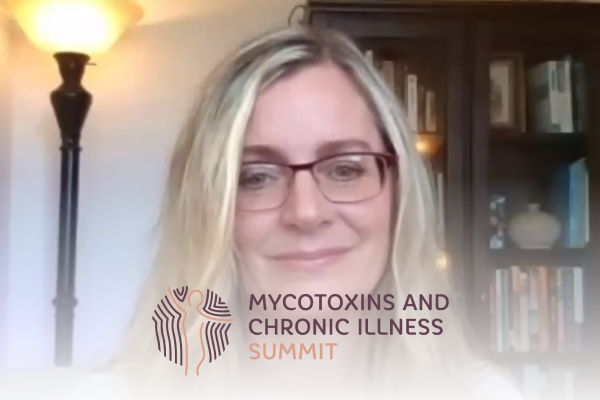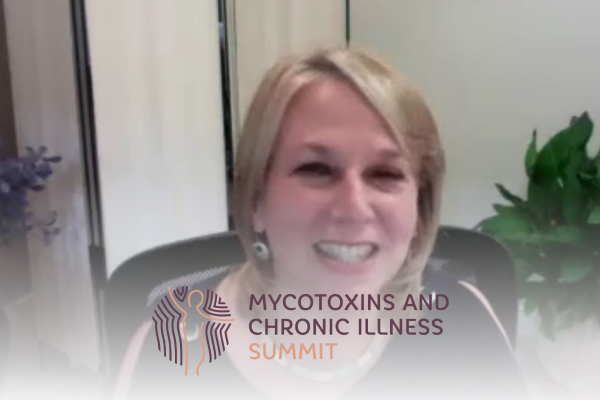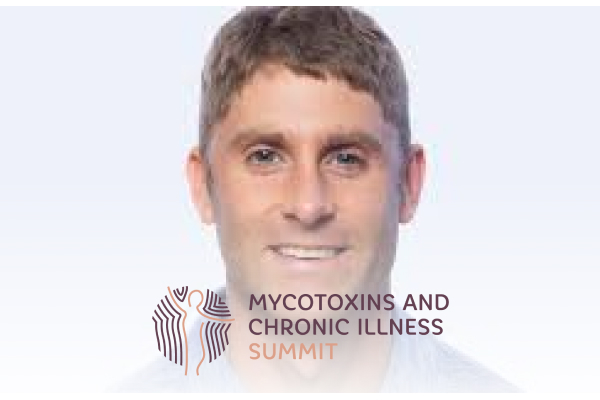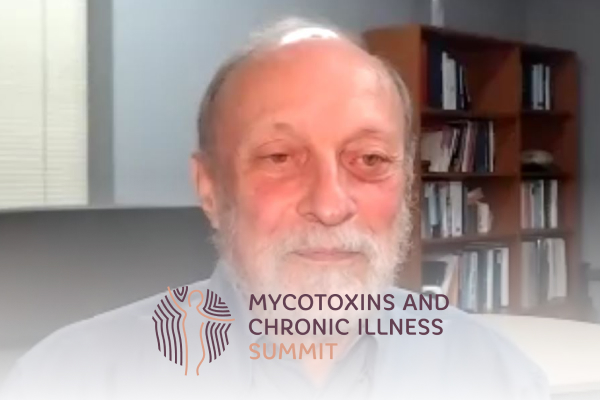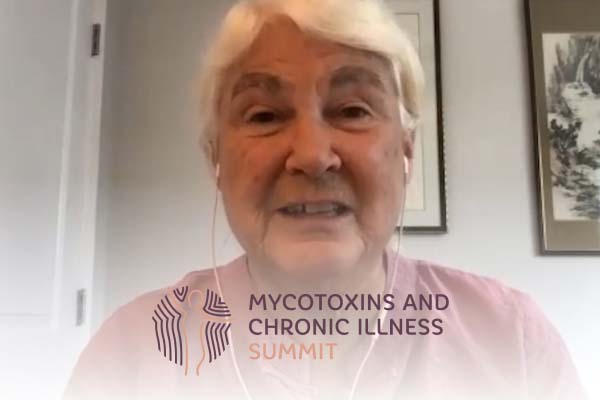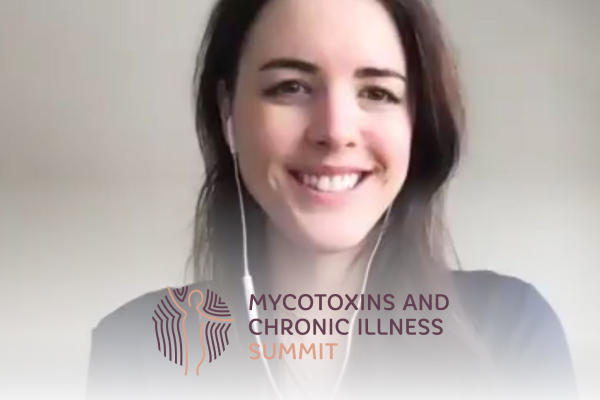Join the discussion below

Nafysa Parpia, ND has an independent practice at Gordon Medical associates, specializing in the treatment of Lyme disease and other complex chronic illnesses such as autoimmunity, mold toxicity, fibromyalgia, environmental toxicity and gastrointestinal disorders. Her patients with chronic Lyme Disease are typically those who either do not do well with antibiotics, or prefer... Read More
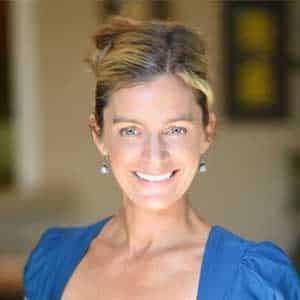
Kelly McCann, MD, passion for understanding why certain people develop specific conditions drove her beyond conventional medicine to study first Complementary and Alternative Medicine, then Integrative Medicine, Functional Medicine, and Environmental Medicine, which led to an exploration of chronic infections and illness due to mold exposure. As a practicing Internal... Read More
- Mold patients and their ailments
- Different practices for infections
- Mass cells/ Inflammatory responses
Related Topics
Allergy Issues, Anti-histamines, Babesia, Bartonella, Borrelia, Chronic Illness, Co-infections, Compound Medications, Concurrent Infections, Ehrlichia, EMF, Environmental Toxic Load, Gi Issues, Histamine, Immunological Cell, Inflammatory Response, Interstitial Cystitis, Lyme, Lyme Disease, Mast Cell Activation, Mast Cell Activation Syndrome, Mold Illness, Mycotoxins, Neurological Symptoms, Palpitations, Patients, Progress, Q Fever, Rashes, Rickettsia, Sensitivities, Sensitivity Reactions, Symptoms, Teeny Doses, Tick-borne Illnesses, Treatment ProtocolNafysa Parpia, N.D.
Welcome to this episode of the “Mycotoxins and Chronic Illness Summit”. I’m so excited today to interview Dr. Kelly McCann. Dr. McCann’s passion for understanding why certain people develop specific conditions, drove her beyond conventional medicine to study complementary and alternative medicine and integrative medicine, functional medicine, environmental medicine, which led to an exploration of chronic infections and illness due to mold exposure. She has a thriving practice, The Spring Center located in Costa Mesa, California. She lectures regularly at both national and international professional conferences. Dr. McCann is on the board of directors for two professional organizations, the American Academy of Environmental Medicine and the International Society for Environmentally Acquired Illness. She holds four certifications in functional medicine, medical acupuncture, and integrative medicine. She completed her residential fellowship at The Center for Integrated Medicine at the University of Arizona with Dr. Andrew Weil. Her residency training was both in internal medicine and pediatrics in Phoenix, Arizona. She graduated from Tulane with a dual degree in medicine and a master’s in public health. Welcome Kelly. I’m so happy to have you here today.
Kelly McCann, M.D.
Hi, Nafysa. So happy to be here.
Nafysa Parpia, N.D.
So you and I have a very similar practice or a very similar way in the way that we approach patients with complex chronic illness. So I’m super excited to interview you today. And today we’ll talk about tying this all together. In other words, it’s not just mold. It’s not just mycotoxins, but there’s so much else that’s going on as well in our patients. So let’s start by talking about the common presentation. So people with mold illness and in what some of the fundamental components of your treatment protocol are.
Kelly McCann, M.D.
Okay. Mold patients can present with so many different ailments and that’s one of the things that makes it so confusing. And many of these symptoms overlap with lots of other symptoms. So, any system in the body can be impacted by mold. So I have patients who have chronic fatigue because of mold, who have chronic insomnia, but oftentimes they’ll have multiple systems involved. So they’ll have GI issues, they’ll have allergy issues. They might have rashes, palpitations, and oftentimes they’ll develop sensitivities to things. So they could be sensitive chemicals, to the foods that they’re eating. They may even develop sensitivities to EMF, which is very common in mold patients. Those are some of the things that I see most often. Oh, and neurological things. Brain fog is a big, big one. For me, myself, I was fatigued and had some peripheral neuropathy kinds of symptoms. Many of the patients we see, and I think a lot of the practitioners get into this because we’ve all had our own experiences. And I really think that helps because patients understand that we went through it too, you know?
Nafysa Parpia, N.D.
Right. I love that you bring up all the different types of symptoms that patients can experience because they do, especially our patients, particularly the GI symptoms and the neurological symptoms. And so many times there’s so much else that’s going on besides only mold. And I know when I’ve got patients who come to my practice and they’ve got mold and mycotoxins illness, they often have tick-borne illnesses as well, Lyme, Babesia, Bartonella, Ehrlichia, all those co-infections. And there’s also a concurrent infections that people tend to have as well. And I think that’s a big missing piece that isn’t looked at. So tell me about your practice and the different types of infections that you might see people with, who also have mold and mycotoxins.
Kelly McCann, M.D.
Sure. Yeah, you’re right. We see both of these things and they tend to not only present together, but there’s a synergy between the two of them. So people will get sicker if they have tick-borne illness or infections when they’re exposed to mold and vice versa. I see a lot of Lyme in California. Even though, technically the CDC doesn’t really recognize it as an endemic area for Lyme disease, there is Lyme disease here. Those ticks don’t really care about the demarcation of the state lines.
Nafysa Parpia, N.D.
Exactly.
Kelly McCann, M.D.
And people travel. Many of my patients will have lived elsewhere in the country, elsewhere in the world. There’s tick-borne illness everywhere in the world, lots of it in Europe, but especially in the Midwest, which we don’t often think about. And it can be a variety of different species of Borrelia. Additionally, I see a lot of relapsing fever Borrelia in my patients here. So these are Borrelia species that are related to Lyme, but not quite Lyme. I tell patients, you know, you’ve got about 300 different species, give or take, of Borrelia, and many of them can cause illness. And we only test commercially for a handful, Borrelia burgdorferi, and it’s often missed. And then that’s just the tip of the iceberg.
So as you mentioned, you know, many of these patients will have the trifecta Bartonella, Babesia, Borrelia, or Lyme, and then there’s the Rickettsia, Ehrlichia and Anaplasma. I’ve actually found a couple of patients recently too, in fact, with Q fever that was really driving a lot of their symptoms. And they had seen several other Lyme doctors and they just weren’t getting any better. They just weren’t responding to treatment. And now finally that we’ve identified this Q fever, which is really odd, they’re starting to recover. So pretty, pretty cool stuff, which basically brings me back to the point. We have to look for all the potential infections. We can’t just think it’s mold because we’ve got a mycotoxin test that’s a little bit elevated. We really need to dig a little bit deeper to take care of these folks.
Nafysa Parpia, N.D.
Yes. That’s really important as well because the mycotoxin load on the test can show that it’s not that high, but the person can also be more sensitive to that mycotoxin load or to a mold allergy, particularly if they have other infections. And so somebody could have what seems to be not so much of a mold issue when actually their sensitivity is higher due to a plethora of other issues that they have, that, being other infections. In fact, I find that most patients of mine who come in with mycotoxin illness, they certainly do have other infections underlying that we’re just never hunted for. And that if I treat the mycotoxin illness first, I treat the mold allergies first, then it becomes a lot easier, more efficacious in treatment of the tick-borne illness as well-
Kelly McCann, M.D.
Exactly, yeah. You really have to get the mold out of the way. And hopefully many of the symptoms will improve, but you know, usually it’s patients get 50% better, or 40% better and we’ve still got work to do. They’ve still got work to do so. So, yeah. Let me see. I wanted to also talk about. What else do I want to talk about? mast cell activation?
Nafysa Parpia, N.D.
Yes, big one.
Kelly McCann, M.D.
It’s a big one. And I know that other participants have talked about it a little bit, but I do find it incredibly common in not only our mold patients, but also our chronic infection patients because Bartonella tends to be a big trigger for mast cell activation.
Nafysa Parpia, N.D.
Yes, and also a lot of our patients have a very high environmental toxic load. And so the pathogen, sorry. The pathogens Bartonella included and the environmental toxicants are both triggering mast cell activation syndrome. And I’m finding that if I treat mast cell activation first in many patients, then they’re actually able to tolerate treatment from older mycotoxins as well as for tick-borne illness. Are you finding the same?
Kelly McCann, M.D.
Absolutely. Yes. So, we started out talking about mold, but really when patients present, one of the things that I assess for first, and I think you do too, is to really look for a mast cell, to look for those sensitivities, because some times my patients are so sensitive, they can’t take any of the medications. They can’t take the binders. They get really, really sick and we’ll just be spinning our wheels unless we deal with the mast cell and quiet everything down.
Nafysa Parpia, N.D.
Yes. So, just for our viewers for listening, mast cells are our oldest immunological cell. And they send out histamine in a repertoire of up to 1000 other chemicals. And when they’re doing so appropriately, it’s when we’re having a sensitivity reaction to something, maybe a food or for example, grass outside. And our mast cells exist in so many different systems of our body, in our muscles, our bones, our brain, our gastrointestinal tissues and the mucosa of all our insides, actually. And so patients will have symptoms in all of these areas and a lot of times they don’t know why. And so, I found actually, when I treat mast observation first, calm down to mast cells, then people are not rejecting treatment because a lot of the times our patients are stuck in a loop of healing and they don’t know how to stop the inflammatory response. So inflammation just continues on and on and on, and then they have an inflammatory response to the medicines and the herbs we’re trying to give them.
Kelly McCann, M.D.
Mmhmm. Yes, I find that in some of my most exquisitely sensitive people can’t even take some of the things that we want to give them for quieting down mast cells. So, we tend to use a lot of anti-histamines. And then the inactive ingredients, I find this commonly, the inactive ingredients in the different formulations are triggering the mast cells. And so a medication that’s supposed to be helpful is actually triggering their symptoms and making them feel worse. And that’s always a clue to me that we’re dealing with mast cells.
Nafysa Parpia, N.D.
Yes. Me, too.
Kelly McCann, M.D.
Lots of compound things. But for those folks out there listening, I do want to encourage you and give you hope that this really can be addressed. I’ve found that teeny, teeny, tiny doses, you know, doses that wouldn’t even seemingly do anything for a normal person, if it’s compounded and started slowly, people do start to respond. And so it’s very gratifying as a practitioner and certainly as a patient, to start to see some progress.
Nafysa Parpia, N.D.
Exactly, yes. It’s actually often, the thing that begins the progress in the patients is to treat the mast cells first. A lot of my patients have interstitial cystitis and nothing has treated in the past. But when I treat their mast cells, that stops, which is pretty amazing.
Kelly McCann, M.D.
Yeah. That’s a very difficult, conventionally, a very difficult condition to treat. But think about it as, it’s a mast cell problem, probably triggered by Bartonella, we start to have tools that-
Nafysa Parpia, N.D.
Very exciting. Let’s talk about symptom presentation of mold illness. Although we both know, and we’ve been telling our viewers today that it’s not just mold. However, I think it’s important. However, I think it’s important to talk about what the symptoms might look like in mold, knowing that it’s not just mold. So, what are the symptoms we typically see?
Kelly McCann, M.D.
So, as I mentioned earlier, we might see chronic fatigue. We might see the insomnia. We might see increased allergies and sensitivities, gastrointestinal symptoms. I’ve actually seen patients with recurrent SIBO. We can’t clear the SIBO. They have mold. I have one lady, you know, clinically she’s not any better after seeing several GIs, me treating her SIBO. Probably three rounds of different kinds of treatments, antibiotics and whatnot, and it never got better, never better. And finally, I convinced her to do a realtime lab mycotoxin test and oh my gosh, all of them off the charts. And here it is. Here’s why we can’t clear her SIBO, because she’s living in a moldy building and her immune system is a mess, and her GI tract is leaky and just not really able to get on top of this. So recurrent symptoms, recurrent infections, even things like recurrent staph infections, rashes can be associated with mold, weird kinds of pain.
Ice pick pain is, you know, kind of traditionally thought of as mold illness symptom. I have a lady with a chronic cough and I think I’ve experienced a cough from mold. Respiratory issues, of course. And when patients come in with allergies and respiratory issues and cough, that’s a little bit easier to draw those conclusions that the respiratory symptoms are being caused by mold. It’s the weird wacky symptoms that are much more difficult to identify that they might have mold exposure. But for the patients and for the practitioners who are listening, who are just getting into this, if the patient has symptoms in multiple systems in the body, you have to think about mold and you have to think about chronic illness, chronic infections, tick-borne illness and environmental toxicants. I think that that actually is the third pillar that is often forgotten, too.
So when practitioners come at this from a, even from a functional perspective, we don’t learn enough about environmental toxicants in our training, whether you’re a naturopath or certainly, you don’t learn anything as a medical doctor. But the environmental medicine piece, those heavy metals, I’m sorry, toxic metals, the other environmental toxicants are a huge, huge issue.
Nafysa Parpia, N.D.
Thank you you for bringing this up. I think this is huge as well. And there is research that shows how environmental toxicants will cause dysregulation in the immune system. On one hand, our patients have hyperactivity in their immune system. They have auto immune conditions, mast cell activation syndrome. And then on the other hand, they’re unable to mount an appropriate immune response to kill off infections. And it is true. The research shows that the environmental toxicants do play a massive role in this. And then you combine that with tick-borne illness, and then we’ve got even more immune dysregulation, hyper activity and underactivity simultaneously. And I find that a lot of my patients metal loads are quite high, particularly after the fires in California, I’m seeing a lot more arsenic in people’s blood and urine unprovoked, that I didn’t see prior to the fires.
Kelly McCann, M.D.
Oh, wow.
Nafysa Parpia, N.D.
Yeah. You have less fires over here. Over here, we had a lot of them, unfortunately. And people’s health has changed in the bay area for sure,
Kelly McCann, M.D.
I bet.
Nafysa Parpia, N.D.
if they lived near where the fires were. Yeah.
Kelly McCann, M.D.
Well that comes back to this total load idea, which I think is really important for patients and practitioners to understand. I like the image of a sink rather than a bucket, because the truth is we all are trying to do some detox and we’re trying to get rid of these environmental chemicals that are in us, and we have capacity to do that. We sweat, we’ve got our, you know, cytochrome P450 in our liver that helps with the detoxification of many of these toxicants. So the size of the drain and the sink is our capacity for detox. And then how deep your sink is or how broad your sink is, it depends on your capacity for detox and how much is in your sink. And if you’ve got tick-borne illness and mold exposure, crappy detox genes, and lots of environmental exposures, you’re going to overflow. And that overflow is all the symptoms that we’re talking about and trying to, as practitioners identify the symptoms in the system, and then based on that, do the appropriate testing so we can figure out what the heck is in your bucket, in your sink and help you get rid of it.
Nafysa Parpia, N.D.
I love that. I love that analogy of the sink. So there was some research that talked about, or that looked at people with complex or sorry. That looked at people with chronic Lyme disease, and it showed that people who suffer from chronic Lyme have more SNPs or mutations in their genes of detoxification, as opposed to those who don’t have chronic Lyme, they’re able to handle their Lyme quicker as expected. And I do like to test people’s genes of detoxification and as well, test their toxins and compare. And sure enough, I see that relation in the patients as well. Yeah.
Kelly McCann, M.D.
And then of course, because these patients are so often so sensitive, they really need practitioners who understand the whole landscape so that they can be appropriately treated. It takes a lot of understanding on the part of the practitioner, as you know, to help get the person through so that they can do it in the best way possible, that’s gonna cause the minimal amount of pain and suffering as they go through their treatment plan, right? ‘Cause ultimately we’ve gotta get them to the other side, but we want to do it in a way that they can function as much as possible.
Nafysa Parpia, N.D.
Exactly. I think this is a good time for us to talk a little bit about ISEAI, you know? So Dr. McCann and I are both on the board of directors of ISEAI, which is the International Society of Environmentally Acquired Illness. And we do offer education to patients and doctors alike. We hold conferences for training doctors and for patients as well because this information is kind of scant. And it’s very, very important, especially the environmental piece because like you were saying, Kelly, we do naturally have processes in our bodies to detoxify. However we didn’t evolve to live on a planet that is so toxic and therefore to have a toxic burden that we do. And we’re not, I don’t believe we’re fully equipped to detox the types of environmental toxin loads that I see in my patients, and I’m sure that you see in yours. That includes mycotoxins and other toxins.
Kelly McCann, M.D.
Right, yeah. We’re not equipped to deal with the tens of thousands of environmental chemicals. And when I think about environmental medicine, which is really the study of the environmental chemicals and their impact on our health, and this is something that’s been around since the 60s with Rachel Carson and “Silent Spring”, and it’s only getting worse.
Nafysa Parpia, N.D.
Exactly.
Kelly McCann, M.D.
There’s so much immune dysfunction, endocrine dysfunction, neurological dysfunction, as a result of environmental toxicants and it’s not being taught. It’s not being addressed. Patients have no idea. I mean, most people know, okay, we need to eat organic. That’s really the wise choice, right. But if you’re cooking in Teflon and you’re defeating the purpose. And drinking out of plastic and not choosing organic, I mean, that’s just not a wise at this point, if you can afford it. But there are so many pieces of information that are just not out there. You know, I learned a couple of weeks ago, my husband brought this to my attention. There was a chemical company in southern California out of the LA area, the name of which escapes me, but they dumped hundreds, if not thousands of barrels of PCB, I’m sorry, PCBs in the channel between LA and Catalina Island.
Nafysa Parpia, N.D.
Wow.
Kelly McCann, M.D.
Thousands of barrels- of fat soluble toxicants that will never, or in millennia breakdown.
Nafysa Parpia, N.D.
And so, it’s our drinking water, it’s is in our food. As a result, it’s in the air we breathe.
Kelly McCann, M.D.
It’s everywhere, it’s horrifying. And these are toxicants that end up in our fat cells. And they’re very, very difficult to get rid of. We can’t even really test for them right now. We don’t have labs capable of testing them. And we wonder why there’s an obesity epidemic and everything like that. It’s not just about high fructose corn syrup and sugar, it’s about all the chemicals. It’s really horrifying stuff. And I guess my point is total load and finding practitioners who understand all of the intricacies of these mold toxins, chronic infections, environmental toxicants to help people get better.
Nafysa Parpia, N.D.
That’s really, really important. There aren’t enough practitioners who have this slew of information at their fingertips on how to test and how to treat. And I’m happy that at ISEAI, we’re helping to educate people on this. So it’s just a wonderful board to be on.
Kelly McCann, M.D.
It’s been really fun and it got us to get to know each other.
Nafysa Parpia, N.D.
It sure did. Yeah, so exciting. Tell us about the pentad
Kelly McCann, M.D.
Okay. So, I found this really cool. I can’t take credit for it. So, Lawrence Afrin, Larry Afrin has been one of the doctors who really identified the condition of mast cell activation amongst others. But he put together a group of practitioners. And then one of them was a cardiologist named Andy Maxwell. And Dr. Maxwell is actually a pediatric cardiologist. And so he was seeing all these young girls, usually, with POTS, postural orthostatic tachycardia syndrome and dysautonomias and mast cell activation. And he would also see gastroparesis and autoimmune conditions. And that’s what he named his pentad. So it’s mast cell activation, dysautonomia, gastroparesis and autoimmune disease, and then the other piece is a connective tissue disorder called Ehlers-Danlos hypermobility syndrome.
And that is the pentad. And around that pentad then becomes things like craniocervical instability, tethered cord, median arcuate ligament syndrome, SIBO, PANDAS, anxiety, depression, et cetera. And then I would call it a pentad plus when we actually really recognized the chronic infections and the mold as part of that figure. And once I learned about the hypermobility piece and the patients who have EDS or some variant of EDS, all the light bulbs started going on in my head because for those of you who don’t know about this, it’s a laxity of the connective tissue, the ligaments, the joints, all of the connective tissue in the body. And I think about it and I explain it to patients like our tissues are supposed to be kind of tightly woven together, and when they’re lax, that opens up avenues for infections to infiltrate, for toxins infiltrate. And so these people get sicker quicker.
Nafysa Parpia, N.D.
They do. I see this pentad every day. This typical patient, I’m so happy that these doctors put a name to it because it’s something we see and we talk about, we notice. I also see that in their laxity of, So, I’m gonna backtrack. Dr. Paolo Bolognese, who is a surgeon who helps people with CCI, which is cranial cervical instabilities, laxity of the ligaments that hold up the brainstem, he talks about mast cells tenderizing the brainstem. So I think of the laxity of the tissues. Now they’re, I tell patients, it’s like, instead of being like this, it’s like this. That’s an exaggeration, but now a lot can filter in, including mast cells and inflammatory cytokines. And sure enough, so many of the patients have EDS and they have POTS, and they have cranial cervical instability. And it’s worsened by the mast cell activation syndrome, which is triggered by the infections and the environmental toxicants. So all of this is connected in this way.
Kelly McCann, M.D.
Yes.
Nafysa Parpia, N.D.
Yeah.
Kelly McCann, M.D.
This is so much fun to talk about.
Nafysa Parpia, N.D.
I know. It’s so much fun. I know. And why is it fun? Because we’re helping people who otherwise don’t get help. Where else? And they’re told, our patients are told they’re crazy, or that they’re making this up or they want to be sick. And I can’t tell you how many times I have people in my office crying to me telling me I don’t want to be sick. Why did the last 20 doctors tell me it’s my fault? Or I’m crazy or… No, they’re not crazy. There’s actually physiological and biochemical imbalances that are happening in the body.
Kelly McCann, M.D.
Yeah, yeah. It is really sad that that so many of our colleagues have closed off their hearts and their minds to their patients. ‘Cause you can’t help people when you feel like that.
Nafysa Parpia, N.D.
No.
Kelly McCann, M.D.
You know, and I get it. I know that there are folks out there that are abusing the system, that are using narcotics, but oftentimes it’s a cry for help. It’s because they didn’t get the help that they needed. They didn’t know how to ask for the help that they needed. And we as practitioners have to listen to the patient and start from a premise that we believe what they’re telling us, otherwise we will never be able to help. And that seems like a no brainer to me. It seems like the only way to practice.
Nafysa Parpia, N.D.
Exactly.
Kelly McCann, M.D.
But unfortunately that’s not how a lot of conventional medicine views the world. At one point I had this revelation when I was in residency, that really clarify to me why it’s so difficult for most conventional doctors to be of service to patients with complex chronic illness. And it’s because that’s not how conventional medicine thinks.
Nafysa Parpia, N.D.
No.
Kelly McCann, M.D.
Conventional medicine never asks why. Why is this person experiencing these symptoms? What is it unique about this person that’s experiencing these symptoms? They say, what are the symptoms? Which tests do I need to order to figure out what the pathology is? And then what do I do? What medications can I give and what surgery can I give? Never in that thought process is the why.
Nafysa Parpia, N.D.
Exactly.
Kelly McCann, M.D.
And that’s the beauty of functional medicine, naturopathic medicine. All of the things that we’re doing is we’re asking why.
Nafysa Parpia, N.D.
Right. And in our society, we’re trying to put the acute model of care onto complex chronic illness care, and complex chronic illness cannot be supported by an acute model of care. And our medicine works or general medicine works great for acute issues, but certainly no for complex chronic, and particularly when the question of why, what are the triggers, how far along in the healing cycle is somebody stuck that even the triggers don’t even matter anymore at some point. We can remove the triggers. We can take someone out of a moldy environment, they’re still sick. It’s because the biochemical pathways have already been set in motion and they need to be stopped and turned around. And for each patient, it is absolutely personal. And personalized medicine is what is missing, so.
Kelly McCann, M.D.
Yes, yeah. And it takes time. It takes effort on both the practitioner’s part and the patient’s part. The patients have to be willing to participate. There is not gonna be a pill. There’s not gonna be a surgery that’s gonna fix them. Even if they have tethered cord and CCI, there’s still a lot of other work to do.
Nafysa Parpia, N.D.
Right. We have to deal with the tick-borne illness and the mast cell activation syndrome and the toxicants. They have to do rehabilitation work. And then also the psychological, spiritual, and emotional pieces that come along with it that make us all human, but become amplified when we’re very sick.
Kelly McCann, M.D.
So shall we talk about putting this all together-
Nafysa Parpia, N.D.
Let’s talk about it. Yes.
Kelly McCann, M.D.
So when people come in and they’re incredibly sick and incredibly sensitive, I mean, we’ve kind of been alluding to this, chances are, they have mast cell. Chances are, they have a condition called limbic system activation and maybe vagus nerve dysfunction, right. So you’ve got the central nervous system involved with limbic system activation. The brain perceives the world as a very dangerous place. We’ve got the autonomic nervous system involved with the vagus nerve, and that needs to be rehabilitated.
Nafysa Parpia, N.D.
Right.
Kelly McCann, M.D.
We’ve got the the immune system in the form of mast cells that are just on fire and perceiving threats even though there aren’t any, and dumping all their inflammatory meteors and making people sick. So that’s where we start, is to dampen all of that down.
Nafysa Parpia, N.D.
Yes, exactly. Let’s talk about how we do that. We’ll talk about mast cell, giving them compounded medications because a lot of times they’re sensitive, even to the herbs. I like to do that. And then I like to enter the immune system using peptides as well. I like to use BPC-157, TB4-FRAG to just calm down the immune system. Same with KPV for the mast cells. What do you like to do to modulate the immune system before beginning?
Kelly McCann, M.D.
I use a lot of LDN, actually. I found LDN works really, really well. Microscopic doses .1 milligrams. Even less than that sometimes. I do tend to use anti-histamines a great deal ’cause I find that they’re relatively inexpensive and generally pretty well tolerated. So I use that. I will use Chromelin, which is a pharmaceutical, not so much for immune regulation, but more for mast cell.
Nafysa Parpia, N.D.
Do you use Ketotifen?
Kelly McCann, M.D.
I do use Ketotifen, not quite as much ’cause I do find it’s a little pricey, but for those for whom it works, it’s wonderful. And I think that that’s the unique art of medicine, particularly when dealing with mast cells, is that everyone is so unique, the way that they respond, we have to try a variety of different things.
Nafysa Parpia, N.D.
Exactly, because one person’s perfect medicine, the other person might not be ready for that. You can send them backwards. So we have to really address each person as a unique individual that they are in front of us, finding different ways into the system.
Kelly McCann, M.D.
Exactly. I’ve used Paramine occasionally. I use a lot of Quercetin in my less sensitive patients, typically. Those are most of the things. And oftentimes between those things, I’m able to quiet. I use a variety of different vagus nerve exercises. I recommend the Rezzimax on a fairly regular basis, which is a vagus nerve stimulation device. It’s like a little vibration device that I learned about from one of my patients who really liked it. Again, another way in. So especially if people can’t take much orally because they’re so sensitive using the vagus nerve exercises, the different devices, the listening, the vagus nerve listening things like the Sensate system is helpful, and then limbic system retraining.
Nafysa Parpia, N.D.
DNRS or the Gupta program.
Kelly McCann, M.D.
Mmhmm, absolutely. I recommend those a lot.
Nafysa Parpia, N.D.
I also really like to use I’m a neurologic chiropractor. My patients get so much benefit when they’re working with us concurrently just in the nervous system retraining.
Kelly McCann, M.D.
Very nice. That’s great. Yeah. What other things? So, that’s kind of quieting things. And then, if they have sensitivities or allergies, I actually was trained to use a low dose allergy therapy and sublingual immunotherapies through the American Academy of Environmental Medicine. And so, I do use those things for patients. We may treat mold allergy or mold sensitivity or food sensitivities with LDA or SLIT therapies. And I find that very, very helpful.
Nafysa Parpia, N.D.
Right I’ll do that with LDI, which is also very, very helpful as well. It looks like we have so many similarities
Kelly McCann, M.D.
We do.
Nafysa Parpia, N.D.
in the way that we treat, and our approach. We might use somewhat different modalities, but even those have have similarities. It’s just so much fun to talk to you.
Kelly McCann, M.D.
Oh yes, this is great. So then let’s see. We’ve quieted things down a little bit, and now we can start to implement some of the mold detox, perhaps. One of my favorite things to use actually is phosphatidylcholine. my faves, both oral and IV. So I know you use some too.
Nafysa Parpia, N.D.
Yeah, I use it a lot also. Very important to get the toxins out using those lipids. As well, it increases the flexibility of the cells to let nutrients in, remove misshapen RNA from the cell membranes. A lot of times, patients aren’t ready for those lipids yet, and I find that those are the ones who need co-factors to support our natural detoxification systems first, before they’re even ready for the lipids. use minerals and B vitamins and amino acids.
Kelly McCann, M.D.
I may do some other things to help with mold detoxification. But, you know, I’ve learned to be really cautious with the binders. I think in our really sensitive patients, binders can just wreak havoc, and a lot of practitioners don’t realize that. And when Shoemaker first started, he put everybody on Cholestyramine which doesn’t work in sensitive patients we know. And I actually don’t use a lot of Cholestyramine much anymore, anyway, although it does work in the right patient. It works really well for some people, but it only really binds the ochratoxins. So if people have trichothecenes, if they’ve got aflatoxin, they’re gonna need other binders anyway. But I’ve gotten burned a couple of times using too many binders or the patients who goes, I need more charcoal and more
Nafysa Parpia, N.D.
I know. They call me and they’re like, oh my God, I’m a mess. Right.
Kelly McCann, M.D.
Yeah. Slow and steady, always good, the way to go.
Nafysa Parpia, N.D.
Yes, and of course I’m supporting the organs of elimination, the liver, the kidneys. They got the skin, the lymph with various herbs, for those particular systems as we’re detoxing. Sauna therapy, I find to be very, very important, especially for metals. But a lot of my patients aren’t ready for the sauna yet. They can only do five minute to 15-minute increments at first, otherwise the treatment backfires because there’s too much of a load coming through, more than they can handle. So, they have to start slow. Work their way up.
Kelly McCann, M.D.
Yes, very slow. And yeah, I find that we’re cheerleaders. Like slow and steady. You can do it.
Nafysa Parpia, N.D.
Right, right, right. ‘Cause they are patients for a long time for at least a year, very typically sometimes five years, somewhere in-between, some people longer, depending on how ill they are and-
Kelly McCann, M.D.
How sensitive they are.
Nafysa Parpia, N.D.
Sensitive they are, their genes, their toxic load and their microbial load. And a lot of times people will have infections throughout their whole GI tract, starting from the stomach all the way down to the large intestine. So it can take a year or two to treat that. So I’m treating that slowly as I’m treating everything else. And it takes a while.
Kelly McCann, M.D.
It’s a complicated symphony for people, for us, for them to be able to navigate the whole journey. It’s really a lot. So let’s see. Let’s say we’ve successfully worked on the mold piece and now we can layer in a treatment for infections. And again, everything is personalized. It really does become a dialogue between me and the patient. Some patients really don’t want to use antibiotics, and then some absolutely want them. So there’s so many different ways that we can treat these infections. But I think my point that I want to make is that we have to identify them. We have to really look for them. We can’t give up with a negative western blot from Quest, because-
Nafysa Parpia, N.D.
Exactly.
Kelly McCann, M.D.
you anything.
Nafysa Parpia, N.D.
No, no, no. Exactly. It’s important, yes, to look at all the different possibility of infection. So some of my patients, they only want herbs, but they only do well with IV antibiotics. Some of them don’t do all of antibiotics at all, or they’ve been on oral antibiotics for three or five years and they come in and they’re a mess and do all of that, and using a much more gentle approach. Everybody’s body is different. The response rate is different. That’s so important, I think, for people to know because people will come in and say, how long is this gonna to take doc? You know, I don’t know. But you’re gonna know me for a long time. We’re gonna work together. It’ll be a little while.
Kelly McCann, M.D.
Yeah. People always want to know how long and it’s just, it’s impossible to tell. I mean, I had one woman come in and she was fairly young, 35 and really sick, very fatigued. But she responded to therapy beautifully. Within six months, she was moving to Europe because she got a new job and started her life. And that’s amazing, but it’s rare.
Nafysa Parpia, N.D.
Exactly, exactly. Yes. Well, thank you so much. Is there anything else that you want to add before we wrap up?
Kelly McCann, M.D.
Gosh, you know, I think I just really want to encourage people. If you’re not finding the practitioners that you need, keep looking. There are practitioners out there that can help you, who have the piece of the puzzle, who see you differently, who are able to really identify what it is that you need, and to have hope. You can recover from these things. This is not a death sentence. It may feel that way when things get really dark, but you don’t have to live this way.
Nafysa Parpia, N.D.
No, you don’t. There is hope. There is hope, and we are here for you. We’re here for you.
Kelly McCann, M.D.
Yes. Thank you so much, Nafysa.
Nafysa Parpia, N.D.
Thank you, Kelly. It was so wonderful.
Downloads

